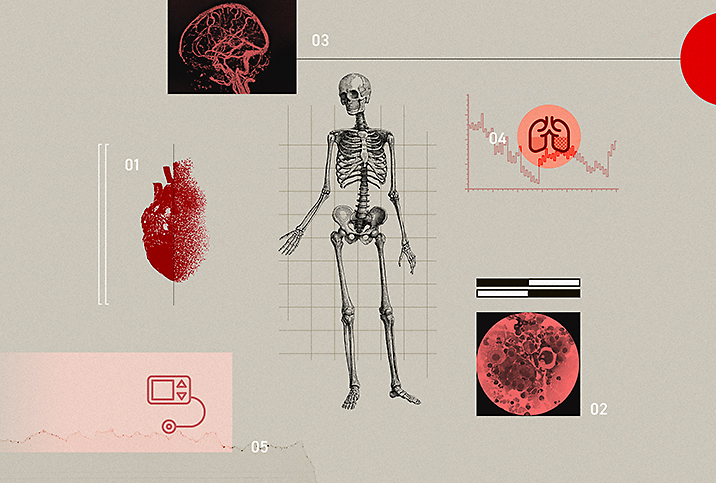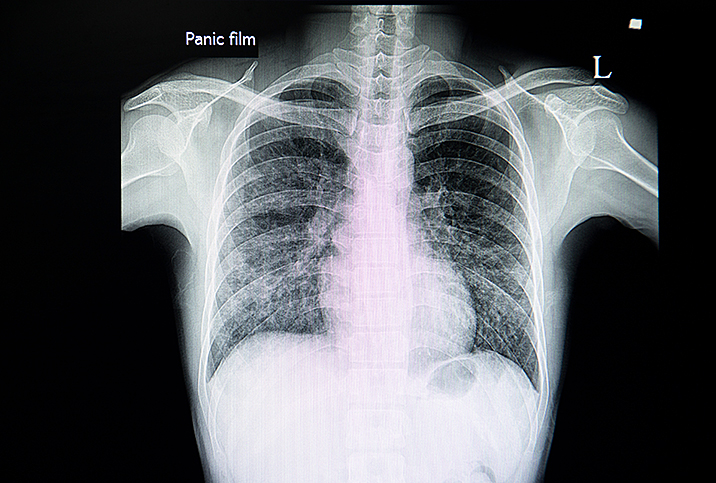The Top 5 Deadliest Diseases in Men

There's an inevitability about death. Unless someone in the medical community has something miraculous in their back pocket, it's something that we will all face one day.
Fortunately, the life expectancy for American men has steadily increased consistently over the past century. In fact, the U.S. Census Bureau reports male life expectancy went up nearly 10 years between 1960 and 2015.
In 2021, the average American man is estimated to live an average of 78.7 years—a number expected to climb to 83.9 years by 2060, according to the U.S. Census Bureau.
That being said, the top five deadliest diseases for men in the U.S. don't change much from year to year. Here's what to look out for.
1. Heart disease
Heart disease consistently ranks as the most fatal disease in the U.S., with 357,761 men dying in 2019—one man dies every minute and a half.
While there are many different types of heart disease, the Centers for Disease Control and Prevention (CDC) reports coronary artery disease (CAD) is the most common heart disease in the nation. Part of the danger is that CAD is a major cause of heart attacks: The disease occurs when the arteries in the heart narrow and become hardened as a result of plaque buildup, which eventually blocks necessary blood flow to the heart.
Though you may have a greater risk of heart disease due to family history, there are plenty of ways to reduce the risk, such as abstaining from smoking, maintaining a regular exercise regimen and a balanced diet, and ensuring you keep other conditions like diabetes, high cholesterol and blood pressure under control. If you already have heart disease, you can better manage its early stages or slow it down by implementing some of these healthy lifestyle changes.
2. Cancer
Cancer is the second most prevalent killer of American men, claiming 315,876 in 2019. According to the CDC, the deadliest cancers for men are lung cancer, colorectal cancer and prostate cancer.
Smoking significantly increases your risk for lung cancer and can affect your prostate, so if you're looking to lower your risk, consider quitting right now. It's also worth noting nonsmokers can get lung cancer too, which is why it's important to maintain your health in order to lower your risk of disease.
There's no sure way to prevent any cancer, although many experts believe that making healthy lifestyle choices helps lower your risk.
As for prostate and colorectal cancers, the best thing you can do is to attend regular preventive health checkups so you can detect any signs of the diseases as soon as possible for the highest chances of successful treatment.
There's no sure way to prevent any cancer, although many experts believe that making healthy lifestyle choices helps lower your risk.
3. Stroke
A stroke happens when blood flow to the brain is obstructed by a broken blood vessel or some kind of blockage in an artery, usually due to a blood clot. When the brain doesn't get the blood it needs, its cells start to die, which can lead to severe and irreparable brain damage. Getting help at the first signs of a stroke is crucial, or it can lead to death.
According to the Stroke Awareness Foundation, almost 800,000 people had a stroke in 2019, more than 140,000 of whom died. The American Heart Association reports that someone dies of a stroke every 3 minutes and 33 seconds in the U.S. An estimated 40 percent of fatalities due to stroke happen to men.
The main signs that you may be having a stroke are sudden confusion, trouble speaking or seeing, loss of balance, numbness and sudden severe headache. If you or someone you know experiences these symptoms, get help immediately. There's no surefire way to prevent a stroke, though experts say you can reduce your risk by avoiding high blood pressure, managing diabetes and high cholesterol, maintaining a healthy weight, and avoiding tobacco use, excessive alcohol consumption and the use of illicit drugs.
4. Lung disease
Chronic bronchitis and emphysema are two lung diseases often listed under the umbrella term of chronic obstructive pulmonary disease (COPD), which was responsible for 156,045 deaths in 2018.
Both types of COPD block airflow in the lungs, making it difficult to breathe. In some cases, people may develop chronic bronchitis and emphysema together.
As smoking is the leading cause of COPD, the best thing you can do to lower your risk is to abstain from smoking and limit your exposure to secondhand smoke. Experts say it's also a good idea to avoid e-cigarettes and vapes.
5. Diabetes
It's estimated that almost 35 million adults in the U.S. have diabetes, although 1 in 5 may not know they have it. Diabetes is the leading cause of kidney failure, adult blindness and lower-limb amputations, and the underlying cause of death for 83,564 Americans in 2017. However, diabetes was also listed as a contributing cause of death on more than 270,000 death certificates in 2017.
Diabetes can occur when there is a deficiency of insulin in the body or when the body is unable to use insulin the way it's supposed to. Insulin is the hormone responsible for breaking down glucose and then converting it into energy.
Some risk factors for diabetes, such as your age, race, gender and family history of the disease, are uncontrollable. However, there are factors you can manage that will make you less likely to develop diabetes, including maintaining a healthy diet and weight, not smoking and staying active.
Though there are other diseases that can cause men, and others, harm, these are five to definitely watch out for. The best way to avoid any ailments is to maintain a healthy lifestyle and visit your doctor regularly. And if you're experiencing any of the symptoms from the respective diseases or disorders listed above, you should probably jet to your doctor's office immediately.


















